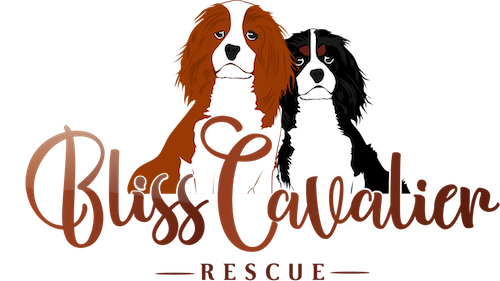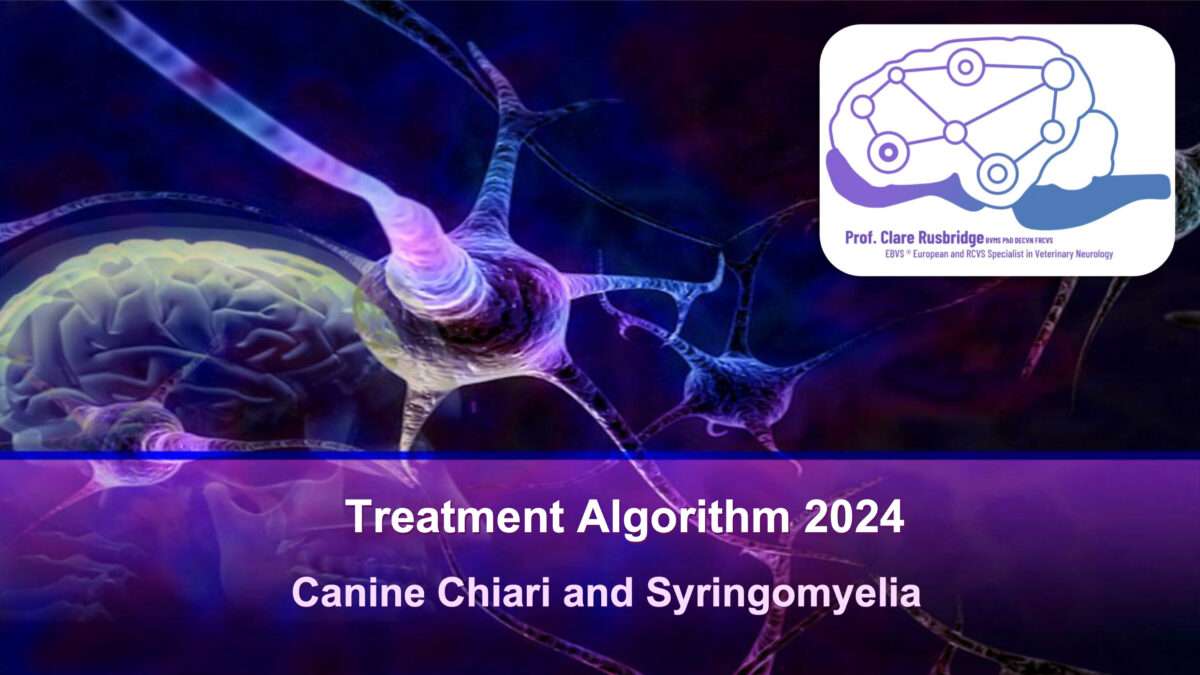Canine Chiari Malformation and Syringomyelia Treatment Algorithm 2024 – Professor Clare Rusbridge

Preventing Obesity and Inflammation in Cavalier King Charles Spaniels
29 July 2024
Help Us By Completing A Gift Aid Form
20 January 2025Professor Clare Rusbridge has published the chiari malformation and Syringomyelia treatment algorithm for many years. Having access to the treatment information has been incredibly valuable, and this algorithm has undoubtedly saved thousands of Cavalier lives over the years while also giving them a much better quality of life.
What is Chiari Malformation? (CM)
Chiari Malformation, or CM, happens when the skull is too small, which makes things cramped for the brain.
This pushes part of the brain, called the cerebellum, down into the spinal canal. It can mess up the flow of cerebrospinal fluid (CSF), leading to pressure and pain. Sometimes, this also causes headaches or discomfort at the front of the head.
The most common symptoms are pain when being lifted or when moving from lying down (some yelp or groan), rubbing their face or head, sensitivity to touch, spine pain, changes to behaviour, e.g., aggression or withdrawn, disturbed sleep, and trouble jumping or climbing stairs.
The average age when symptoms first appear is typically between six months and three years old.
What is Syringomelia? (SM)
Syringomyelia, or SM, occurs when the flow of spinal fluid (CSF) is disrupted, causing fluid-filled pockets called syrinxes to form in the spinal cord. These syrinxes can lead to intense pain, a weird pins-and-needles feeling that makes dogs typically scratch up at the shoulder area (phantom scratching). They can also suffer from progressive weakness, scoliosis, and postural deficits.
CM and SM significantly affect the quality of life for many Cavalier King Charles Spaniels. Unfortunately, these conditions are vastly underdiagnosed, meaning many Cavaliers suffer without any pain relief at all. Many people think the symptoms are simply ‘quirky’ things that their dogs do or that their dog is ‘wussy’.
Some Cavaliers’ symptoms are more subtle, but they are still in pain, so they need treatment, which is typically inexpensive.
Professor Clare Rusbridge Chiari (CM) and Syringomyelia (SM) Treatment Algorithm 2024
Professor Clare Rusbridge, a renowned veterinary neurologist, identified Syringomyelia (SM) in dogs during the 1990s. Her pioneering work has significantly advanced our understanding of this condition, particularly in Cavalier King Charles Spaniels.
Professor Rusbridge shares her expertise through her YouTube channel @clare-neurovet and website NeuroVet, providing valuable resources for pet owners and veterinarians.
 She has also developed an innovative diagnostic tool called Chiari Check (caninechiari.com). This tool identifies and monitors Chiari-related pain and Syringomyelia symptoms, even when MRI scans are inaccessible due to funds or when a dog may be at high risk for an anaesthetic. Chiari Check scores the likelihood of the dog having chiari malformation and/or Syringomyelia by percentages, which can be given to the general practice veterinarian. That veterinarian can then work with the owner on a medication trial using the treatment algorithm and a referral to a neurologist if the owner wants to proceed.
She has also developed an innovative diagnostic tool called Chiari Check (caninechiari.com). This tool identifies and monitors Chiari-related pain and Syringomyelia symptoms, even when MRI scans are inaccessible due to funds or when a dog may be at high risk for an anaesthetic. Chiari Check scores the likelihood of the dog having chiari malformation and/or Syringomyelia by percentages, which can be given to the general practice veterinarian. That veterinarian can then work with the owner on a medication trial using the treatment algorithm and a referral to a neurologist if the owner wants to proceed.
The Latest CM SM Treatment Algorithm
Clare has released an interactive CMSM treatment algorithm. The PDF includes easy-to-use links to her YouTube videos, which explain the symptoms, treatment choices, and other things vets and owners can do to help their suffering Cavaliers.
Owners are reporting that the videos are incredibly helpful for them and their veterinarians. Managing pain and improving the quality of life for Cavaliers (or other breeds that suffer from CMSM) can be tricky when the condition is severe. Still, the treatment algorithm PDF breaks everything down in an easy-to-understand way.
Treatment options have come a long way, and we are incredibly fortunate to have Clare’s expertise in managing these conditions. Visit the link below for more information.





